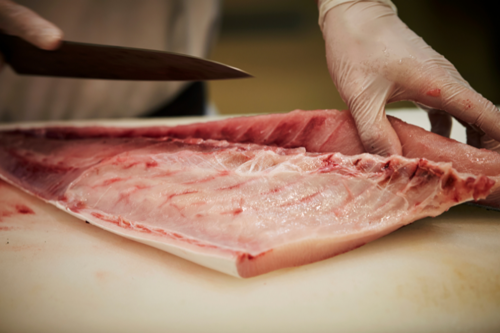Cleaning and filleting fresh fish can be intimidating, but with the right techniques and tools, it can be a simple process. Not only does properly handling fish make it taste better, but it also ensures that the fish is safe to eat. In this blog post, we will cover the steps to properly clean and fillet fresh fish.
1. Gather the necessary tools
The first step to cleaning and filleting fresh fish is to gather the right tools. You will need a sharp fillet knife, cutting board, fish scaler, and a pair of pliers.
2. Scale the fish
The next step is to scale the fish. Using a fish scaler, scale the fish from the tail to the head, making sure to remove all the scales. It is important to scale the fish over a sink or a bowl of water to prevent making a mess.
3. Gut the fish
Once you have scaled the fish, it is time to gut it. Place the fish on the cutting board with its belly facing you. Cut the fish from the anus to the gills. Remove the guts and throw them away.
4. Cut off the head and tail
Using the fillet knife, cut off the head and tail of the fish. This will allow you to fillet the fish properly.
5. Fillet the fish
Start by making an incision behind the gills and press the knife down the spine towards the tail. Run the knife down the spine, using a sawing motion until you reach the backbone. Next, make a slit just above the backbone, then slide the knife along the backbone towards the tail. Repeat this step until you have removed all the fillets.
6. Remove the rib bones
Turn the fillet over so the skin side is facing down. Using pliers, grab the rib bones and gently pull them out. Cut off any remaining bones, then rinse the fillet in cold water.
7. Skin the fillet
Place the fillet skin side down and hold the tail end. Using the fillet knife, slide the knife between the skin and the flesh. Slowly move the knife back and forth, keeping the knife as close to the skin as possible until the skin is removed.
8. Rinse and clean the fillet
Once you have removed the skin, rinse the fillet in cold water to remove any remaining bones or scales. Pat the fillet dry with a paper towel and it is now ready to cook!
Final Thoughts

Cleaning and filleting fresh fish can be a bit intimidating, but with the right tools and techniques, it can be done easily. By following these simple steps, you’ll be able to prepare fish fillets that are not only safe to eat but also delicious. So, the next time you buy fresh fish, don't be afraid to clean and fillet it yourself - it’s easier than you think!








